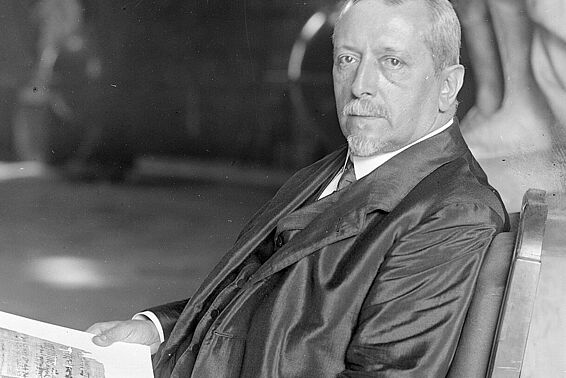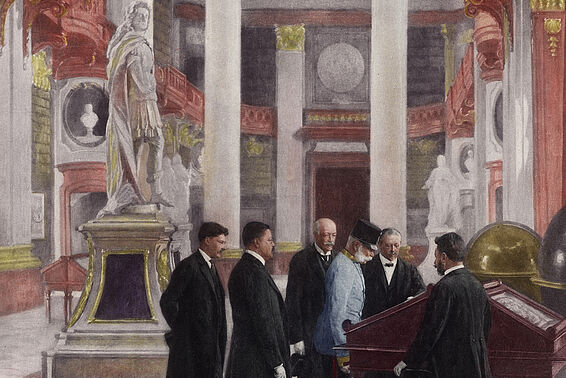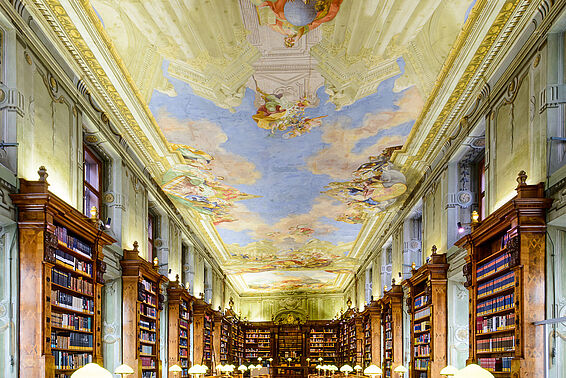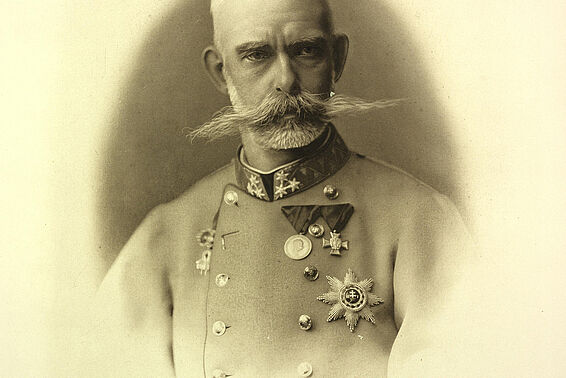1899: The Karabacek Period
During his term of office (1899–1917), Joseph von Karabacek, an orientalist, papyrologist, and numismatist, successfully implemented pioneering improvements. Through his agency it became possible to acquire Archduke Rainer’s important collection of papyri, which laid the basis for today’s world-famous Papyrus Museum and the Austrian National Library’s papyrus collection.
As a result of social developments, particularly that of the history of science and scholarship in the nineteenth century, libraries became the most important centres of information and knowledge, in terms of both quantity and quality. When the Augustinian Reading Room, which had been designed as an attractive facility for users upon Karabacek’s initiative, opened in 1906, the court library finally received a reading room that took these new developments into account. Opening hours were extended and new terms of use were set up. The large-scale exhibitions Karabacek organised in the State Hall gave the general public a first glimpse of the court library’s rich holdings. The first major show to be held there was the Gutenberg exhibition in 1900.
Under Karabacek’s direction it was for the first time that women were admitted as trainees, although they were not yet employed as research personnel.
The turmoil caused by World War I considerably hampered the court library’s work. Nevertheless Karabacek managed to implement important architectural and administrative measures, introduce new magazines, and even compile an exhibition on the art of bookmaking in the war year of 1916.
» 1920: The Court Library Becomes the National Library





